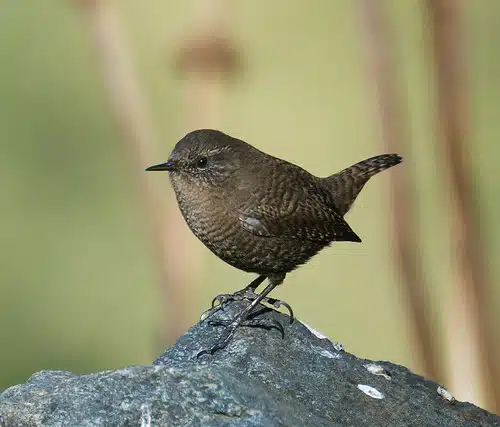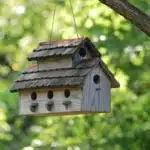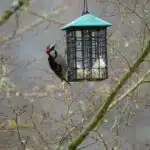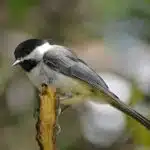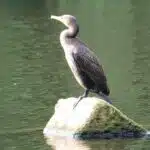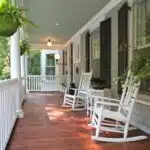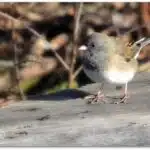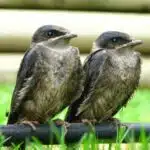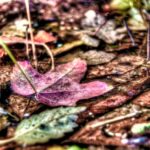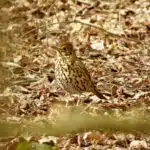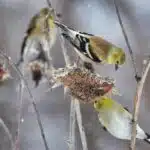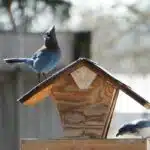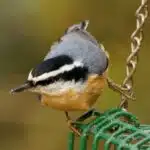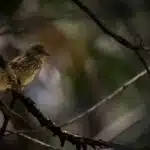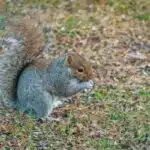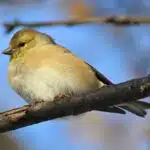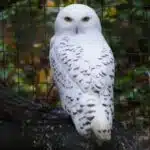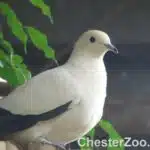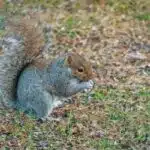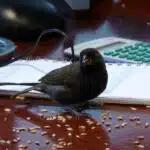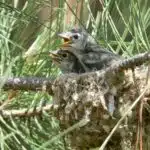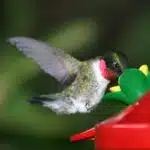Wrens are a delightful addition to any backyard and are known for their lively personalities and beautiful songs. These small birds are found throughout North America, but attracting them to your yard can be a challenge. With some careful planning and attention to detail, you can create the perfect habitat for wrens and enjoy their company all year round.
As an avian conservationist, I have spent many years studying wrens and their behavior in the wild. Through my experience, I have discovered several key factors that influence these birds’ decision to nest in a particular area. In this article, I will share with you some tips on how to attract wrens to your yard and create a safe haven for them to thrive. By following these simple steps, you can help support these beautiful creatures while enjoying their presence in your own backyard.
Understanding Wren Behavior
Observing behavior is key to attracting wrens to your yard. These small, energetic birds are known for their lively personalities and distinctive songs. By observing their behavior, you can learn how they communicate with one another and what they look for in a habitat.
One way to attract wrens is by using their own songs. Wrens are highly responsive to bird calls, so playing recordings of wren songs can be an effective way to draw them to your yard. You can also try mimicking their songs yourself, which may help to pique their curiosity and bring them closer.
Another important factor in attracting wrens is providing suitable nesting sites. Wrens prefer dense vegetation for cover and protection from predators, as well as cavities or other small spaces for building nests. By creating a habitat that provides these features, you can make your yard more appealing to wrens and increase the chances of them taking up residence there.
By understanding wren behavior and using this knowledge to create a welcoming habitat, you can increase the likelihood of attracting these delightful birds to your yard. In the next section, we will explore some specific steps you can take to create a habitat that meets the needs of wrens and encourages them to make themselves at home.
Creating A Suitable Habitat
Attracting wrens to your yard starts with creating a suitable habitat for them. Native plants are crucial in providing food and cover for these birds. Wrens feed on insects and spiders, which can be found in native vegetation such as grasses, shrubs, and trees. Providing a mix of vegetation types that are native to your area will attract a variety of insects and other small animals that wrens love to eat.
Avoiding pesticides is essential when creating a suitable habitat for wrens. Pesticides can harm not only the insects that wrens feed on but also the birds themselves if they ingest contaminated prey. Instead, consider using natural pest control methods like companion planting or introducing beneficial insects to your garden. This way, you can keep pests at bay without harming the ecosystem you’re trying to create.
Creating brush piles and providing perches are also important factors in attracting wrens to your yard. Brush piles offer shelter and nesting opportunities for wrens while perches provide them with vantage points from which they can survey their surroundings and spot potential prey. You can easily create brush piles by stacking branches or logs in an out-of-the-way corner of your yard. Meanwhile, perches can be as simple as installing a birdhouse or strategically placing a few branches around your property.
In summary, creating a suitable habitat for wrens involves incorporating native plants into your landscape design, avoiding pesticides, and providing both brush piles and perches throughout your yard. By doing so, you’ll be able to attract these delightful little birds to your property where they’ll thrive in their natural environment. In the next section, we’ll explore some options for providing shelter to further enhance the habitat you’ve created.
Providing Shelter Options
As a bird-watching enthusiast, I am always looking for ways to provide shelter options for wrens in my yard. One of the best ways to do so is by offering DIY shelter ideas such as nesting boxes or houses. These can be easily made with materials lying around the house, and they provide much-needed protection from predators and harsh weather conditions. Additionally, these shelters can attract other bird species like chickadees or bluebirds to your yard.
When constructing a wren house, there are several key factors to keep in mind. Firstly, it should be placed at a height of 4-10 feet above the ground and facing away from direct sunlight and rain. Secondly, the entrance hole should be no larger than 1-1/8 inches in diameter to prevent larger birds from taking over the space. Finally, adding natural materials such as twigs or grass inside the shelter can help attract wrens.
Offering multiple shelter options in your yard can increase the chances of attracting wrens while also providing homes for other bird species. Consider installing nesting boxes at different heights and locations throughout your property, including near shrubs or trees where birds may naturally seek refuge. By providing adequate shelter options for wrens and other birds, you can contribute to local avian conservation efforts and create a welcoming environment for these beautiful creatures.
To further enhance your yard’s appeal to wrens, it’s crucial to supplement their habitat with water and food sources. These will be discussed in the subsequent section, but it’s important to note that having all three elements – shelter, water, and food – creates an ideal environment for attracting wrens and promoting their well-being in your yard.
Water And Food Sources
Providing shelter options for wrens is an important first step in attracting these beautiful birds to your yard. However, it is also crucial to offer them a reliable source of water and food. Wrens are insectivorous and require a high-protein diet to maintain their energy levels. Therefore, it’s essential to provide them with the right seed varieties that can supplement their diet.
A DIY birdbath is an excellent way to ensure that wrens have access to clean water for drinking and bathing. It is simple and easy to build using materials like clay pots or shallow dishes. Place the birdbath in an area where wrens can easily find it, preferably near a tree or shrub where they can perch before taking a dip. Ensure that you change the water frequently, at least once every two days, to prevent mosquitoes from breeding.
Seed varieties like sunflower seeds, Nyjer seeds, and mealworms are some of the best foods you can offer wrens. These seeds provide adequate protein that helps them maintain their energy levels throughout the day. You can place bird feeders around your yard, but ensure that they’re at least five feet off the ground and away from any potential predators like cats or squirrels.
Next up on our list is choosing the right birdhouse for your yard. Providing shelter options, food sources, and water will help attract more wrens into your yard. A well-built birdhouse should be spacious enough for them to nest comfortably while ensuring that predators cannot access it easily. We’ll take a closer look at choosing the right birdhouse in our subsequent section.
Choosing The Right Birdhouse
What type of birdhouse is the best fit for attracting wrens to your yard? Decorative designs or DIY options? Size and material considerations, location selection – these are all important factors to consider.
When selecting a birdhouse, it is important to choose one that is specifically designed for wrens. Wrens prefer houses with a small entrance hole (1 inch in diameter) and an interior space of about 4×4 inches. The house should also have a sloping roof to help keep out rainwater.
In addition to the design features, size and material considerations are also important. A wooden house is preferred over plastic, as it provides better insulation for the birds. It’s also essential that the house be free of any toxic chemicals or paints that could harm the birds. When deciding on size, remember that larger houses may attract other species of birds instead of wrens.
Location selection is another key factor in attracting wrens to your yard. Ideally, the house should be placed between 5-10 feet above ground level and in a location with some cover nearby (such as shrubs or trees). Additionally, avoid placing birdhouses in areas with high foot traffic or where predators (such as cats) may be lurking nearby.
Proper placement of birdhouses is essential for attracting wrens to your yard. By following these guidelines for choosing the right birdhouse – including decorative designs and DIY options – you can increase your chances of success in creating an inviting environment for these delightful little birds.
Proper Placement Of Birdhouses
Choosing the right birdhouse is an important factor in attracting wrens to your yard. Wrens prefer small, enclosed spaces to build their nests and raise their young. A DIY birdhouse made of untreated wood with a 1-inch entrance hole is ideal for wrens. Decorative birdhouses may be visually appealing, but they are not always functional for nesting birds.
Once you have chosen the right birdhouse, proper placement is crucial for attracting wrens. The birdhouse should be placed in a shady area near trees or shrubs, as this provides protection from predators and keeps the birds cool during hot weather. It should also be mounted approximately 6 to 10 feet off the ground, with a clear flight path for the birds to enter and exit.
In addition to providing a suitable nesting space, it is important to offer nesting materials for wrens. These materials include twigs, grasses, and feathers that can be scattered near the birdhouse or placed in a nearby basket. Providing these materials will encourage the birds to build their nests and increase their chances of successfully raising their young. By following these simple steps, you can create an inviting environment for wrens in your yard and enjoy watching them thrive.
To further enhance your backyard habitat for wrens, consider providing additional resources such as a water source or food supply. In the next section, we will discuss how to create an ideal environment for wrens by incorporating these elements into your backyard habitat design. But first, let’s take a closer look at the importance of offering suitable nesting materials for these delightful little birds.
Nesting Materials
Leaves, straw, twigs, feathers, grass, and moss can all be used as nesting materials for wrens. Bark strips, yarn, pine needles, wool, and paper can also be effective in attracting wrens to an area. Natural fibres, coconut husk, sticks, wool roving, and other materials can be beneficial when attempting to attract wrens to a yard. It is important to use a variety of materials when providing nesting opportunities for wrens. The type and size of the materials used should be considered to ensure they are suitable for the species. Ultimately, the presence of a variety of nesting materials can help attract wrens to an area.
Leaves
Attracting wrens to your yard can be a rewarding experience for any bird enthusiast. One of the most important factors in attracting these birds is providing suitable nesting materials. Using leaves as nesting material is an excellent way to attract wrens to your yard. Wrens will use a variety of leaves, including grasses and small twigs, to build their nests. By incorporating leaf piles throughout your yard, you can provide wrens with ample nesting material.
In addition to using leaves for nesting material, providing water and food sources can also help attract wrens. Setting up a bird bath and feeder in your yard can provide these birds with the necessary resources to thrive. Wrens are known for their voracious appetite, so keeping feeders stocked with mealworms and suet is sure to attract them.
Fall leaf clean up is also an essential step in creating a suitable habitat for wrens. Leaving fallen leaves on the ground throughout the winter provides shelter and protection from the elements for these birds. Not only do leaf piles serve as a natural nesting material, but they also create a welcoming environment for insects that wrens love to feed on.
By using leaves as nesting material, providing water and food sources, and leaving fall leaves on the ground, you can create an ideal habitat for wrens in your yard. These simple steps not only attract wrens but also contribute to their overall health and well-being. With some effort and dedication, anyone can create a welcoming environment that supports these beautiful birds.
Straw
Nesting materials are critical for attracting wrens to your yard. Aside from leaves, straw is another excellent material that you can use for their nests. Wrens use straw as a lining for their nests, and it provides insulation and cushioning for their eggs. Straw is a readily available material that is easy to handle and store. By using straw as nesting material, you can create a cozy environment that will attract these birds.
Aside from using straw as nesting material, creating a straw mulch is also an effective way of attracting wrens to your yard. Straw mulch provides a warm habitat for insects that wrens love to feed on, making it an ideal environment for them. Additionally, the mulch helps retain moisture in the soil, which benefits plants and other wildlife in your garden.
Creating a wren-friendly landscape requires careful planning and consideration of the needs of these birds. Using straw as nesting material or creating a straw mulch are simple steps towards providing them with suitable habitat. These steps not only attract wrens but also contribute to their overall well-being by providing them with essential resources they need to thrive in the wild.
Twigs
Nesting materials play a crucial role in attracting wrens to your yard. As an avian conservationist or bird-watching expert, it is essential to understand the needs of these birds and provide them with suitable habitat. Aside from straw, twigs are another excellent material that you can use for their nests. Wrens use twigs as a structural base for their nests, and it provides stability and support for their eggs.
Using twigs for wren nests is an effective way of providing them with a cozy and secure home. Twigs are readily available in most environments, making them easy to collect and store. DIY twig birdhouses are also a popular option among bird enthusiasts looking to create a welcoming environment for these birds. By using twigs as nesting material, you can attract wrens to your yard and contribute to their overall well-being.
When creating a wren-friendly landscape, it is important to consider the materials you use carefully. Twigs should be clean and free from any chemicals or toxins that could harm the birds’ health. Additionally, make sure that the twigs are not too thick or sharp, as this could damage the delicate eggs or injure hatchlings. Using twigs as nesting material requires attention to detail but can be a rewarding experience that benefits both wrens and humans alike.
Monitoring Nesting Activity
One of the most rewarding experiences for bird enthusiasts is being able to monitor nesting activity in their backyard. This not only provides a glimpse into the secret lives of birds, but it also helps to track progress and identify any potential problems that may arise during nesting season. If you have successfully attracted wrens to your yard and provided them with a suitable nest box, then monitoring their nesting activity can be a fascinating and educational experience.
To start monitoring nesting activity, it is important to establish a routine of checking the nest box on a regular basis. This should be done at least once a week, but it is recommended to check more frequently during the early stages of nesting when eggs are being laid and hatched. During each check, record any observations such as the number of eggs or chicks present, any signs of predation or disturbance, and whether nest box maintenance is required.
Nest box maintenance is crucial for ensuring the safety and comfort of wrens during nesting season. This includes regularly cleaning out old nests after fledglings have left, repairing any damage to the box or entrance hole, and replacing any damaged or worn-out materials such as twigs or feathers. By keeping the nest box in good condition, you can help to reduce stress on the adult birds and increase their chances of successfully raising young. In the next section, we will discuss some safety measures that can be taken to further protect wrens during nesting season.
Safety Measures For Wrens
Protective measures are a vital aspect of attracting wrens to your yard. Wrens are small birds that require protection from predators such as cats, raccoons, and snakes. To safeguard these birds in your yard, you should avoid using harmful pesticides or chemicals that may harm them. You can also provide safe nesting sites for wrens by using birdhouses made specifically for their size.
Another protective measure is the use of proper building materials for birdhouses. It’s important to avoid using materials that may be toxic or harmful to wrens and other birds. Cedar wood is an excellent option as it repels insects and has natural antibacterial properties. Additionally, ensure that the birdhouse entrance hole is appropriately sized to prevent larger birds or predators from entering.
In summary, implementing protective measures such as avoiding harmful chemicals and utilizing proper building materials are essential when attracting wrens to your yard. These small birds require safe spaces to nest and thrive in their environment. The next section will delve deeper into dealing with predators who may endanger these birds’ safety in your yard.
Dealing With Predators
The natural world is filled with predators and prey, a delicate balance that we observe in our own backyards. However, as bird enthusiasts, it is our responsibility to ensure the safety of our feathered friends from harm. Protective fencing serves as a reliable deterrent against larger predators such as cats or raccoons. By creating a barrier around the area, wrens can go about their daily activities without fear of being attacked.
Another effective method for dealing with predators is to utilize decoy predators. These false replicas of birds of prey such as hawks or owls are strategically placed in areas where wrens tend to congregate. The presence of these decoys creates an illusion that there is already a predator present, deterring real predators from attempting an attack.
As avian conservationists, it is important for us to take measures to protect the wildlife around us. Implementing protective fencing and utilizing decoy predators are simple yet effective methods that can make a significant difference in keeping wrens safe from harm. In the next section, we will discuss how to avoid harmful chemicals that could potentially harm not only wrens but other members of our backyard ecosystem.
Avoiding Harmful Chemicals
Using harmful chemicals in your garden or yard can have significant impacts on the environment and wildlife, including birds, like wrens. It’s important to understand the risks of using chemical pesticides, herbicides, and fertilizers and explore the benefits of natural alternatives.
The use of harmful chemicals can lead to soil degradation and contamination of water sources. This not only affects the quality of your yard but also has a negative impact on bird populations that rely on these resources for survival. Additionally, birds may consume insects that have been exposed to harmful chemicals, leading to health issues or even death.
Fortunately, there are many natural alternatives available that offer benefits beyond being safer for wildlife. For example, using organic fertilizers can improve soil health and promote biodiversity in your yard. Companion planting is another option that can help deter pests without harming birds or other wildlife. Implementing these natural alternatives not only creates a healthier environment for wrens but also contributes to a more sustainable ecosystem overall.
Moving forward with natural alternatives instead of chemicals is a simple way to create a better environment for wrens and other species. By doing so you’ll be contributing to the protection and preservation of wildlife habitats while still maintaining an attractive yard. In the next section, we will discuss how maintaining a clean yard plays an essential role in attracting wrens to your outdoor space.
Maintaining A Clean Yard
After taking measures to avoid harmful chemicals, it is important to maintain a clean yard for the benefit of the wrens. As they are small birds, wrens prefer yards that are free of clutter and debris. Thus, it is recommended to regularly clean up any fallen leaves or branches in your yard. This can also help prevent potential hazards such as tripping or fire.
In addition to keeping your yard clean, one way to attract wrens is through implementing composting practices. Wrens enjoy foraging for insects in soil, and composting provides a healthy soil environment. This not only attracts wrens but also other beneficial insects that can aid in natural pest control. Mulching is another beneficial practice that can provide a comfortable habitat for wrens while also benefiting the overall health of your yard.
By encouraging natural pest control methods such as attracting insect-eating birds like wrens, you can reduce the need for harmful pesticides and herbicides. Planting native plants and providing nesting boxes can also create an inviting environment for these birds. In turn, this helps maintain a healthy ecosystem which benefits not only the birds but also yourself and your community.
Encouraging Natural Pest Control
Integrated pest management is a holistic approach to controlling pests that involves monitoring, prevention, and control. By using this method, it is possible to minimize the use of harmful chemicals in your yard and encourage natural predators such as birds to take care of the pests. One way to promote natural pest control is by increasing biodiversity in landscaping. This means incorporating a variety of plants that attract different insects and animals.
Biodiversity in landscaping can be achieved by planting a mix of flowers, shrubs, and trees that provide food and shelter for birds. For example, native plants are particularly beneficial because they have evolved with local wildlife and provide an important food source for them. Additionally, planting flowering herbs like lavender or mint can attract predatory insects that will help keep pests under control.
Another way to encourage natural pest control is by providing nesting sites for birds like wrens. These small but mighty birds are voracious insect-eaters and can consume hundreds of caterpillars in just one day! To attract wrens to your yard, consider putting up a birdhouse or nest box. Make sure it is located near a source of water and away from potential predators like cats.
Three ways to promote natural pest control:
- Increase biodiversity in landscaping by incorporating a variety of plants.
- Plant native species that have evolved with local wildlife.
- Provide nesting sites for birds like wrens who are voracious insect-eaters.
Incorporating these practices into your gardening routine will not only help keep pests under control but also support the health and well-being of local wildlife. In the next section, we will discuss specific ways you can create a wren-friendly environment in your yard through careful landscaping choices.
Wren-Friendly Landscaping
Encouraging natural pest control in your yard can lead to a healthier ecosystem for both birds and humans. By avoiding the use of harmful pesticides, you can attract beneficial insects that birds like wrens rely on for food. Native plants are particularly important as they provide a habitat for these insects and offer a food source for seed-eating birds.
To create a wren-friendly landscape, start by incorporating native plants into your yard. These plants have evolved alongside local wildlife and are naturally adapted to attract bird friendly insects. Additionally, they require less water and maintenance than non-native species, making them an eco-friendly choice. Mulching techniques and soil health are also important factors to consider as they improve soil fertility and support the growth of healthy plants.
By adopting sustainable landscaping practices, you can create an environment that supports the presence of wrens in your yard. In turn, you’ll enjoy the company of these delightful songbirds as they flit about catching insects and singing their cheerful songs. Remember, small changes in your garden can make a big difference in supporting local biodiversity.
Enjoying The Company Of Wrens
The presence of wrens in your yard can bring joy and entertainment to bird enthusiasts. The benefits of wren companionship extend beyond just their delightful chirping; they also contribute to the ecosystem by consuming insects harmful to crops and plants. Wrens are a common sight in North America, and attracting them to your yard is easy with a few simple tips.
Tips for enjoying wrens without disturbing them include providing adequate shelter and food. Wrens prefer nesting in dense shrubs or trees, so planting native plants that offer cover can attract them. Supplying bird feeders with suet cakes, mealworms, or sunflower seeds can supplement their diet. However, it is essential to avoid overcrowding feeders as this could lead to the spread of diseases among birds.
To further enjoy the company of wrens, observe their natural behavior without disturbing them. Avoid making loud noises or sudden movements that may startle them away from your yard. Instead, use binoculars or a spotting scope to watch them from a distance. A nested bullet point list in markdown format with 3 sub-lists can evoke an emotional response in the audience:
- Watching wrens build nests and raise chicks can be heartwarming
- Witnessing their dedication to caring for their young can inspire admiration
- Seeing fledglings leave the nest for the first time can evoke feelings of wonder
Incorporating these tips into your routine allows you to create a welcoming environment for wrens while enjoying their company without causing any harm. By respecting their space and needs, you can foster a harmonious relationship with these feathered friends and make your yard an oasis for all types of birds.
Conclusion
Wrens are captivating little creatures that bring joy and liveliness to any yard. By understanding their behavior and creating a suitable habitat, you can attract these charming birds to your garden. Providing shelter options such as birdhouses, water sources, and food will also help you draw wrens to your yard.
Choosing the right birdhouse is crucial in attracting wrens as they have specific requirements. Maintaining a clean yard and encouraging natural pest control will further enhance their experience in your garden. Wren-friendly landscaping will also provide them with an environment where they feel comfortable and safe.
Ultimately, attracting wrens to your yard requires effort and patience, but it is well worth it for the beauty they bring. We can learn from these little birds that even the smallest of efforts can make a significant impact on our surroundings. By creating a welcoming environment for them, we not only benefit from their presence but also contribute to their conservation. Let us take inspiration from the humble wren and strive towards making our world a better place for all living beings.
Image Credits
- “Winter Wren” by Koshyk (featured)

